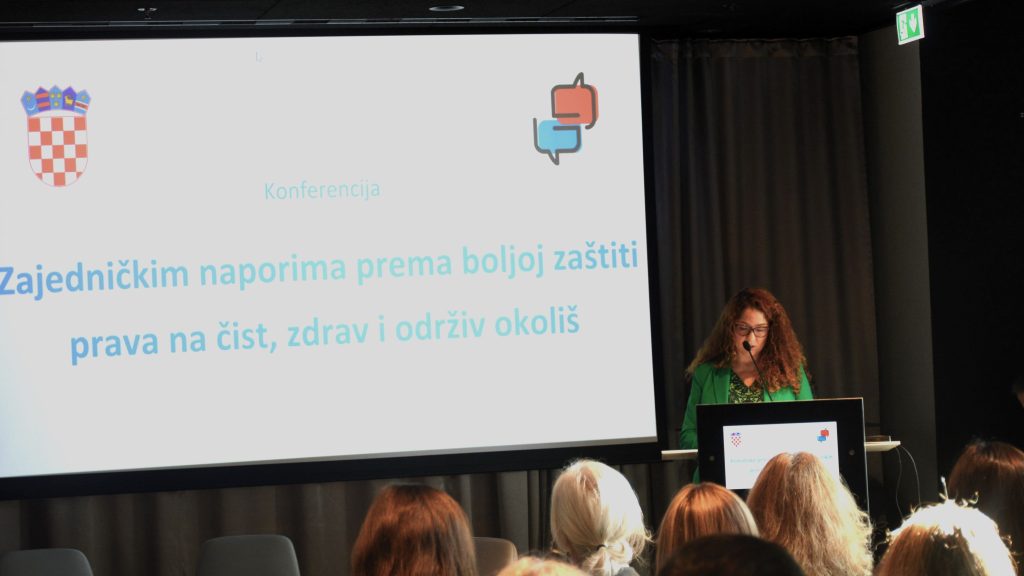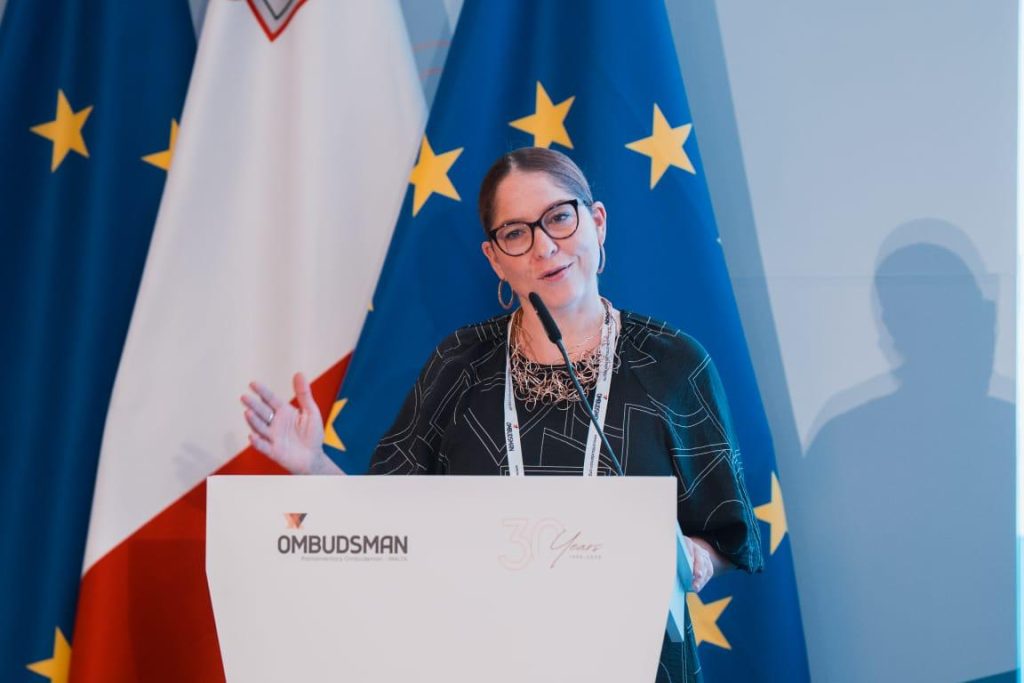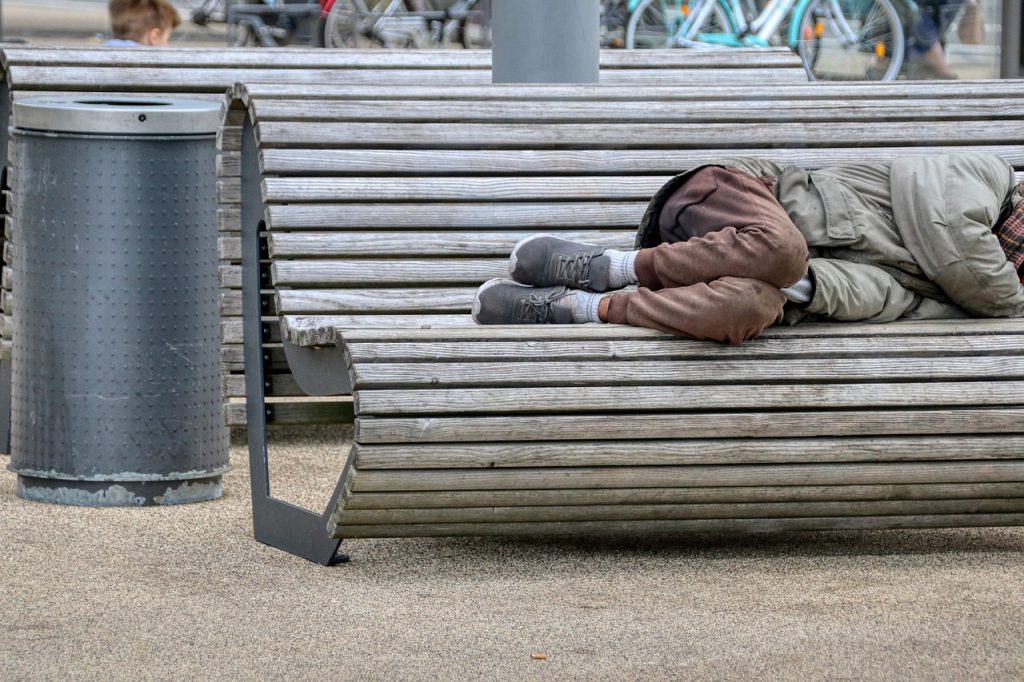This week, the Ombudswoman Tena Šimonović Einwalter underscored once more the role and the position of this independent institution in the constitutional order of the Republic of Croatia, once again emphasizing the importance of its independence.
Regarding its role and the election procedure, in an interview with the television channel N1, she reminded that the Ombudsman is elected by the Croatian Parliament. The entire election procedure goes through a public call and includes public interviews with the candidates in the Parliament, after which the Ombudsman/Ombudswoman is elected by the MPs at a plenary session. The executive branch, i.e. the Government of the Republic of Croatia, has no role in the entire process of electing a person to the office of Ombudsman. According to the Ombudsman Act, election to office requires a simple majority, i.e. 51 MP votes. Ombudsman Tena Šimonović Einwalter was elected with twice as many votes, 115 out of 117 votes of the then-elected representatives.
She also stressed the fact that the Ombudsman is a constitutional category and an independent institution, as enshrined in the first Croatian Constitution, and acts in accordance with the Constitution, laws, and international and European law.
Namely, in line with Art. 93, of the Constitution of the Republic of Croatia, the Ombudsman is autonomous and independent in her/his work. in In its Art. 7 the Ombudsman Act also stipulates that the Ombudsman is autonomous and independent in her/his work and states that any form of influence on the work of the Ombudsman is prohibited.
In addition, she stated, in the discussion about the independence of institutions, it is extremely important to understand the system of checks and balances, which exist and need to exist in order to for the principle of the rule of law to function. Independent institutions are independent because they can point to various problems and call for action, especially with regard to the executive branch.
One of the topics that provokes debate and shows a lack of understanding of the role of the Ombudsman institution is expression in public space. After a major concert on Saturday and accompanying events the day before in Zagreb, the Ombudswoman warned that, the silence of, among others, high-ranking officials echoes loudly, as they did not condemn the behavior of those who sang songs of the Ustasha regime, wore its symbols and shouted the Ustasha salute. She pointed out that the lack of public condemnation sends a message that association with the Ustasha is acceptable in today’s Croatia, and that this impression has unfortunately been contributed to by years of ignoring the problem, the lack of political determination to resolve it and by the abundance of ambiguous public messages by high-ranking officials. Read the Ombudswoman’s full reaction to this issue here.
Finally, in accordance with her role, the Ombudswoman has already directly addressed the issues discussed above. We would like to point here to the analysis of the situation in the field of expression in public space, which is part of the Ombudswoman’s 2024 Annual Report:
In 2024, Ustasha symbols and greetings were used more often than in previous years, which was, among other things, contributed to by the long-standing avoidance of a clearer definition of these symbols, the lack of adequate standardization, consistent processing, but also by the messages sent in public by certain politicians.
According to publicly available data and video recordings, before the concert held on 6 August in Imotski, public and open reproduction and singing of Ustasha songs and the display of symbols associated with the Ustasha movement were recorded on the streets. For example, the recordings showed citizens, including many young people, wearing T-shirts with the inscription “Through Imotski trucks are rushing”, which is a line from the Ustasha song “Jasenovac and Gradiška Stara”, and the media also reported that the Ustasha song “The dawn is here, the day has dawned/Jure and Boban” was sung in the town square. In view of this, the Ombudswoman issued a statement regarding the display of messages and symbols associated with the Ustasha movement and the NDH.
By reviewing the video footage, the police identified the perpetrator who draped the monument to Tin Ujević in the HOS flag before the concert on August 6 and prosecuted him for a violation under Article 5 of the Law on Offenses Against Public Order and Peace, as well as the perpetrator who played the Ustasha song “ “The dawn is here, the day has dawned ” through an external loudspeaker and charged him with the criminal offense of public incitement to violence and hatred under Article 325 of the Criminal Code. The police stated that therefore, on the day of the concert on August 8, they paid special attention to the use of prohibited symbols, greetings and the reproduction of music that incites hatred. Although they established 39 violations under the Explosive Substances and Production and Trade in Weapons Act and a total of 21 violations under the Law on Offenses Against Public Order and Peace, only one of them related to Article 5 of the Law on Offenses Against Public Order and Peace.
In addition, although it was evident from media photos and publicly available videos that several visitors publicly displayed Ustasha symbols and/or publicly sang Ustasha songs, police officers identified and prosecuted three perpetrators of misdemeanors and criminal offenses on both days.
Despite the decision of the Constitutional Court, which also clearly stated in a statement of June 5, 2020 that the salute “Za dom spremni” is not in line with the Constitution of the Republic of Croatia, the confusion in the public about what is legal and what is not was also contributed to by an earlier decision of the High Misdemeanor Court regarding the author of a song that contains an Ustasha salute, which did not sanction the author of the song, while the interpreter of the same song was sanctioned (by another decision of the same court). Those who use this salute, for example by shouting it in public, by highlighting it on T-shirts, caps and scarves, or in comments on social networks, are also being sanctioned. However, not all such behaviors are being sanctioned, as evident from the actions taken in connection with the aforementioned concerts in August 2024, so it is not certain when citizens will be sanctioned for the same actions and when not. Contributing to the misunderstanding are certain politicians who publicly highlight the Ustasha salute, thereby sending a message to citizens that it is legal, indirectly encouraging them to do the same, i.e. to expose themselves to a court judgment, unlike those who enjoy immunity.
Thus, in its Decision Ppž-1387/2024 of 21 February 2024, the High Misdemeanor Court found unacceptable the defendant’s allegations that the “ZDS” salute on the banner placed on the Defenders’ Bridge in Rijeka was an expression of respect and gratitude to the members of the Croatian Armed Forces (HOS) and that it had nothing to do with the Ustasha movement, and stated that the abbreviation of the salute “Za dom spremni”, which is a symbol of hatred, threats, fear and intolerance towards other nations, disturbed the public, thereby fulfilling the characteristics of the misdemeanor under Article 5 of the Law on Offenses Against Public Order and Peace.
The establishment of a working group to draft a law that would replace the outdated Law on Offenses Against Public Order and Peace, which has been in force since 1977 with minimal amendments, represents an opportunity to increase legal certainty in this area. The goal of the working group, in which we participate, is to regulate this legal issue in a modern way, taking into account the needs of the society, the EU acquis, as well as the case law and the legal standards. After the new law is passed, it would be particularly important to conduct a media campaign to explain to the citizens what constitutes illegal speech in the public space.





